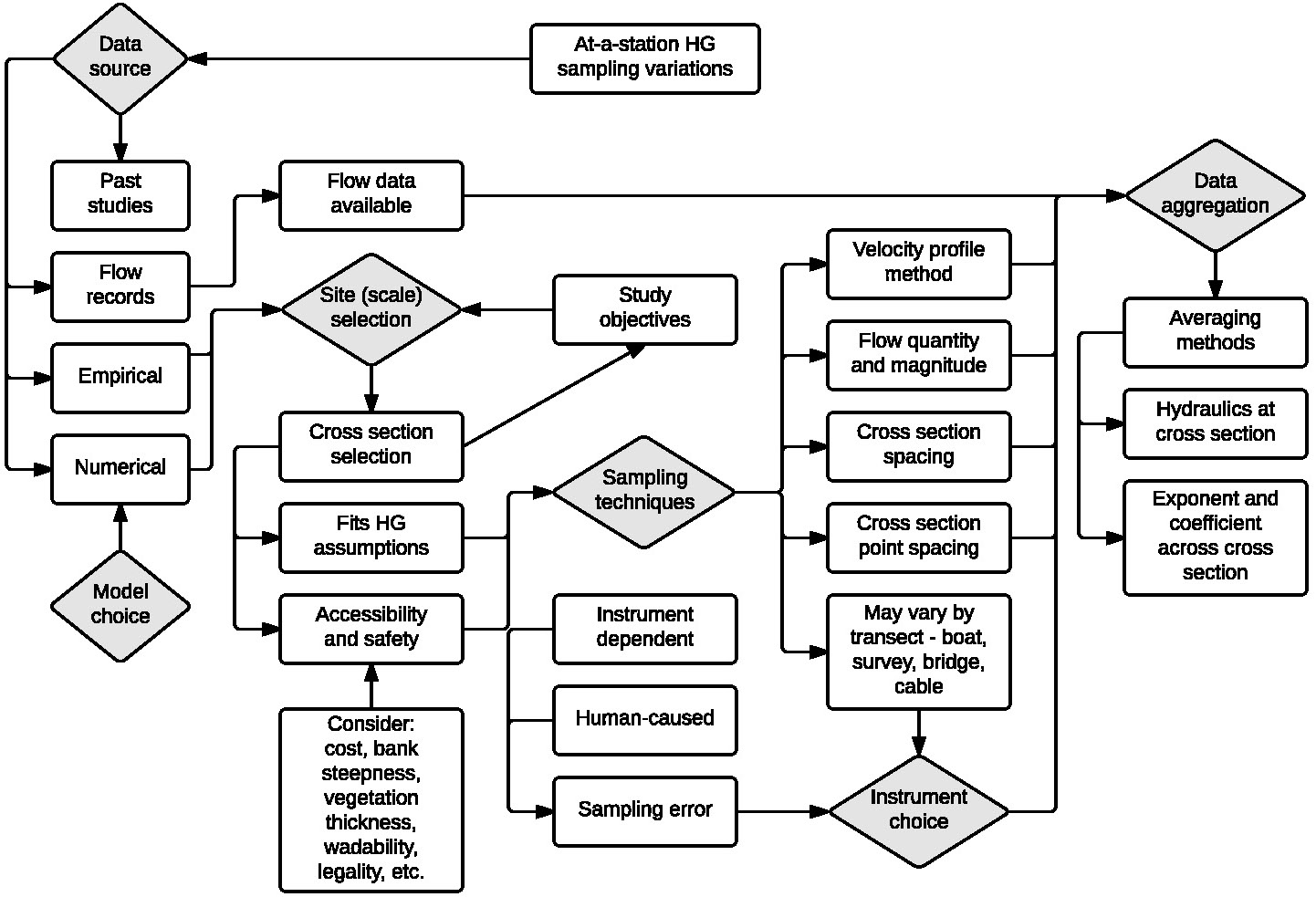Hydraulic Topography
Participants
Gregory B. Pasternack and Bobby L. Gonzalez
Background
Transect-based hydraulic geometry is well established but depends on a complex set of subjective fieldwork and computational decisions that sometimes go unexplained. As a result, it is ripe for reenvisioning in the light of the emergence of meter-scale, spatially explicit data and algorithmic geospatial analysis.

Purpose
This study developed and evaluated a newspatially explicit method for analyzing discharge-dependent hydraulics coined ‘hydraulic topography’ that not only increases accuracy but also eliminates several sample- and assumption-based inconsistencies.
Methods
Using data and hydrodynamic simulations from the regulated, gravel–cobble-bed lower Yuba River in California, power functionswere fitted to discharge-dependent average width, depth, and depth-weighted velocity for three spatial scales and then their corresponding exponents and coefficients were compared across scales and against ones computed using traditional approaches.
Results
Average hydraulic values from cross sections at the segment scale spanned up to 1.5 orders of magnitude for a given discharge. Transect-determined exponents for reach-scale depth and velocity relations were consistently over- and underestimated, respectively, relative to the hydraulic topography benchmark. Overall, 73% of cross-sectional power regression parameters assessed fell between 10 and 50 absolute percent errorwith respect to the spatially explicit hydraulic topography baseline.
Conclusion
Although traditional transect-based sampling may be viable for certain uses, percent errors of this magnitude could compromise engineering applications in river management and training works.
Publications
- Gonzalez, R. L., Pasternack, G. B. 2015. Reenvisioning cross-sectional hydraulic geometry as spatially explicit hydraulic topography. Geomorphology 246: 394–406. http://dx.doi.org/10.1016/j.geomorph.2015.06.024.


